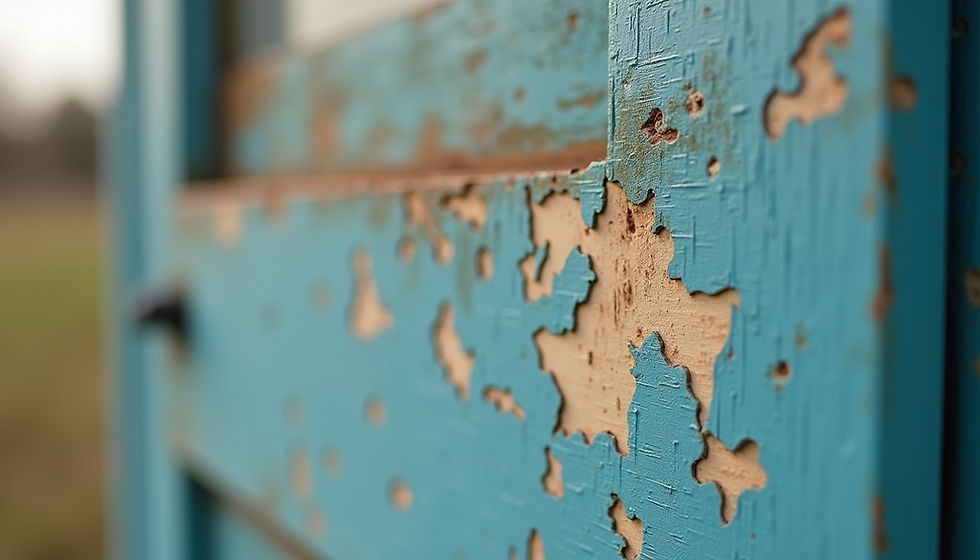How to Spot and Replace Rotten Wood Window Frames
- Angel Sosa
- Jul 14
- 3 min read
Windows are often the first place wood rot appears in a home. The constant exposure to moisture and varying temperatures can lead to deteriorating window frames, ultimately affecting both your home's aesthetic and energy efficiency. In this blog post, we will guide you through identifying early signs of wood rot, assessing the damage, and ultimately replacing the affected wood to keep your windows in excellent condition.
Understanding Wood Rot
Wood rot occurs when wood is damaged by fungi, which thrive in moist conditions. While all types of wood can be susceptible, untreated or poorly maintained wood is particularly vulnerable. The first step in dealing with rot is recognizing its appearance and symptoms.
Signs of Wood Rot
Visual Cues: Look for discoloration on the wood—often appearing dark or dull. Cracks and fractures can also indicate that the wood is compromised.
Texture Changes: If you notice the wood feels soft or spongy when pressed, it's likely rotted. Healthy wood is firm and solid.
Mold or Fungal Growth: The presence of mildew or mold can indicate moisture retention, which can lead to or signify existing rot.
Exterior Damage: Pay attention to peeling paint or powdery substances on the surface, which can indicate moisture problems leading to rot.
Diagnosing If Your Window Frames Are Affected
Once you've identified potential signs of rot, it's important to conduct a thorough assessment.
Inspecting the Frames
Check both the interior and exterior surfaces of your window frames. Use a screwdriver to poke around areas that look suspicious. A healthy frame will resist pressure, while a rotten frame will give way easily.
Moisture Testing
Using a moisture meter can provide an accurate measurement of the wood's moisture content. Ideally, wood should contain less than 20% moisture for optimal health.
Probing for Damage
If the frame is brittle or collapsing under moderate pressure, it signifies extensive damage. In severe cases, entire sections of the frame may need replacement.
Tools and Materials Needed
Before embarking on your DIY replacement project, gather the necessary tools and materials:
Safety goggles and gloves
Screwdriver
Pry bar
Chisel
Wood glue
Wood filler
New wood frame materials (select rot-resistant wood like mahogany or cedar)
Paint or wood stain
Paintbrush
Moisture meter
Steps to Replace Rotten Wood Window Frames
Step 1: Remove the Damaged Frame
Carefully remove any trim or stops around the window. Use a pry bar to gently lift the frame away from the wall. As you detach it, be cautious not to damage surrounding areas.
Step 2: Assess and Treat Surrounding Area
Inspect the area behind the frame for additional rot or damage. If moisture is present, address the source before proceeding. Treat any remaining healthy wood with a fungicide to prevent future issues.
Step 3: Prepare the New Frame
Cut the new wood to size, ensuring it matches the original dimensions. If possible, treat the new wood with a sealant to provide extra protection against moisture.
Step 4: Install the New Frame
Place the new frame into the window opening, ensuring it sits flush and level. Secure it using wood glue and screws, which will hold it firmly in place.
Step 5: Finish and Seal
Once the frame is securely in place, use wood filler to cover any gaps or imperfections. Sand the area smooth, then paint or stain it to match the surrounding decor.

Preventing Future Rot
Regular Maintenance
Perform regular inspections of your window frames, especially after heavy rain or snow. Keeping an eye on the health of your windows can help you spot early signs of trouble before they escalate.
Moisture Control
Ensure proper drainage around your home. Gutters should direct water away from your foundation to minimize moisture buildup. Additionally, consider using caulk or weather-stripping to minimize leaks.
Choosing the Right Materials
When replacing or repairing wood window frames, consider the type of wood you use. Rot-resistant wood such as cedar or engineered wood can provide better longevity.
Conclusion
Spotting and replacing rotten wood window frames may seem daunting, but with the right tools and knowledge, you can take this project into your own hands. Keeping an eye on your windows will not only help maintain the structural integrity of your home but also enhance its overall energy efficiency. By understanding the signs of rot, carrying out regular maintenance, and using quality materials, you can enjoy beautiful, functional windows for years to come.

Regular inspection and early intervention will ensure your windows remain a welcoming feature of your home. Don't let wood rot compromise your comfort—stay proactive, and your home will thrive.





Comments